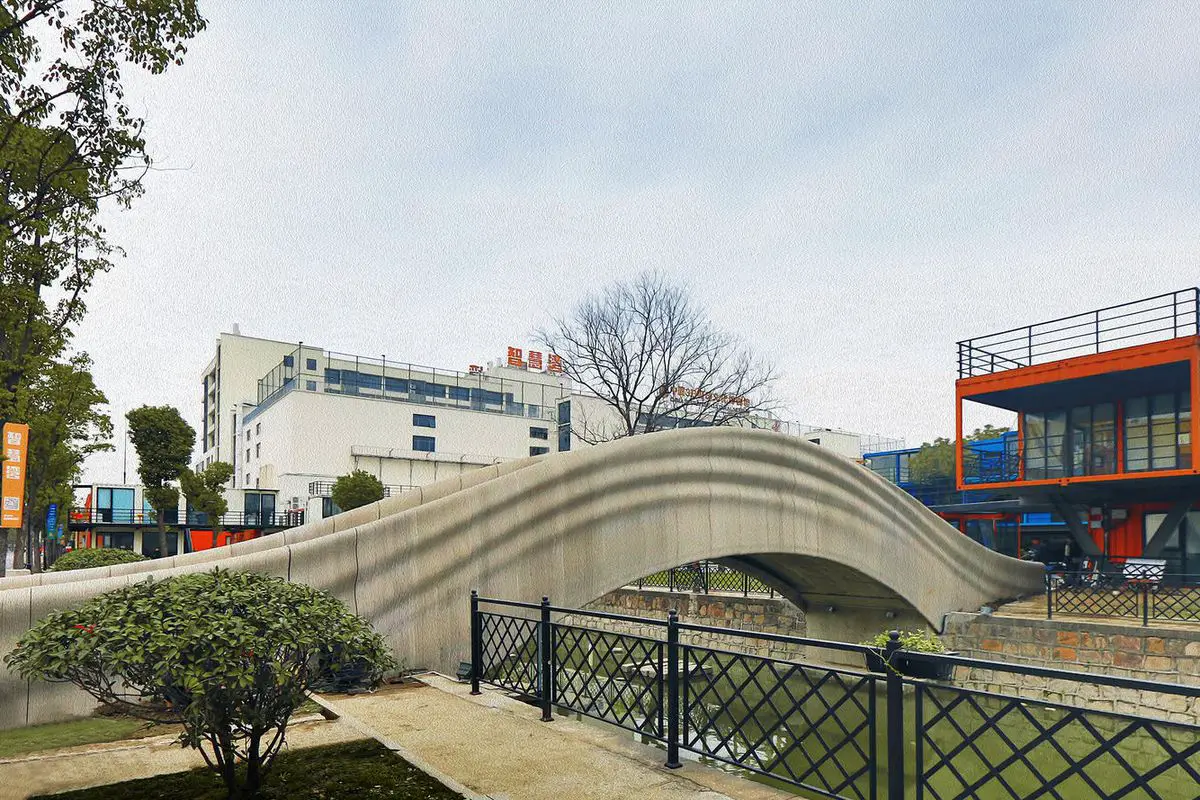When we see the “biggest in the world” phrase, we are generally suspicious of it but this is not the case for this time because the world’s largest 3D-printed concrete pedestrian bridge is actually in use in China.
China usually hosts the mega-constructions, speaking of those that have been built by humans in a conventional way. But the 3D-printing technology is also is finding a place for itself in the architecture it seems.
It is not the only 3D-printed bridge, but the one in Shanghai is currently the longest one at almost 30 meters long. It is a pedestrian bridge over a canal in the Baoshan district and its aesthetics is totally from another era.
We said that it is not the first 3D printed bridge that existed because there’s also another one in Amsterdam. There was a history of this type of construction in China, remembering that they replicated the Yungang Grottoes in a transportable version using this technology.
The world’s largest 3D-printed bridge is in China
The bridge in Baoshan district is 26.21 meters long and 3.6 meters wide. It is designed to support the weight of up to 600 pedestrians.
The bridge was designed by the Zoina Land Joint Research Center for Digital Architecture (JCDA) of Tsinghua University and built by Shanghai Wisdom Bay Investment Management Company. It consists of 44 printed concrete units, each measuring 0.91 x 0.91 x 1.52 meters.
According to the JCDA team of architects, the construction cost two-thirds of what a standard construction would have cost. The bridge was created with two robotic arms that were creating the structure layer by layer and it took 450 hours to build.
The 3D-printed bridge was built in a single arch structure to support the load and the spacing between the fingers of the arch is 14.4 meters. In addition, it integrates a system that monitors the stress and strain on the structure, this way the condition of the structure can be queried in real-time.

The printing materials used were concrete composites with polyethylene fiber and various additives. As published by Tsinghua University, the material’s compressive strength is 65mpa and flexural strength up to 15mpa.
As we mentioned earlier, the appearance is not exactly modernist and, as you might think, there is a reason for this. The team wanted to pay homage to the Zhaozhou Bridge, built between 589 and 618 in Hebei province (northern China) and the oldest standing bridge in China. We will see if its modern version is capable of withstanding so many centuries.





